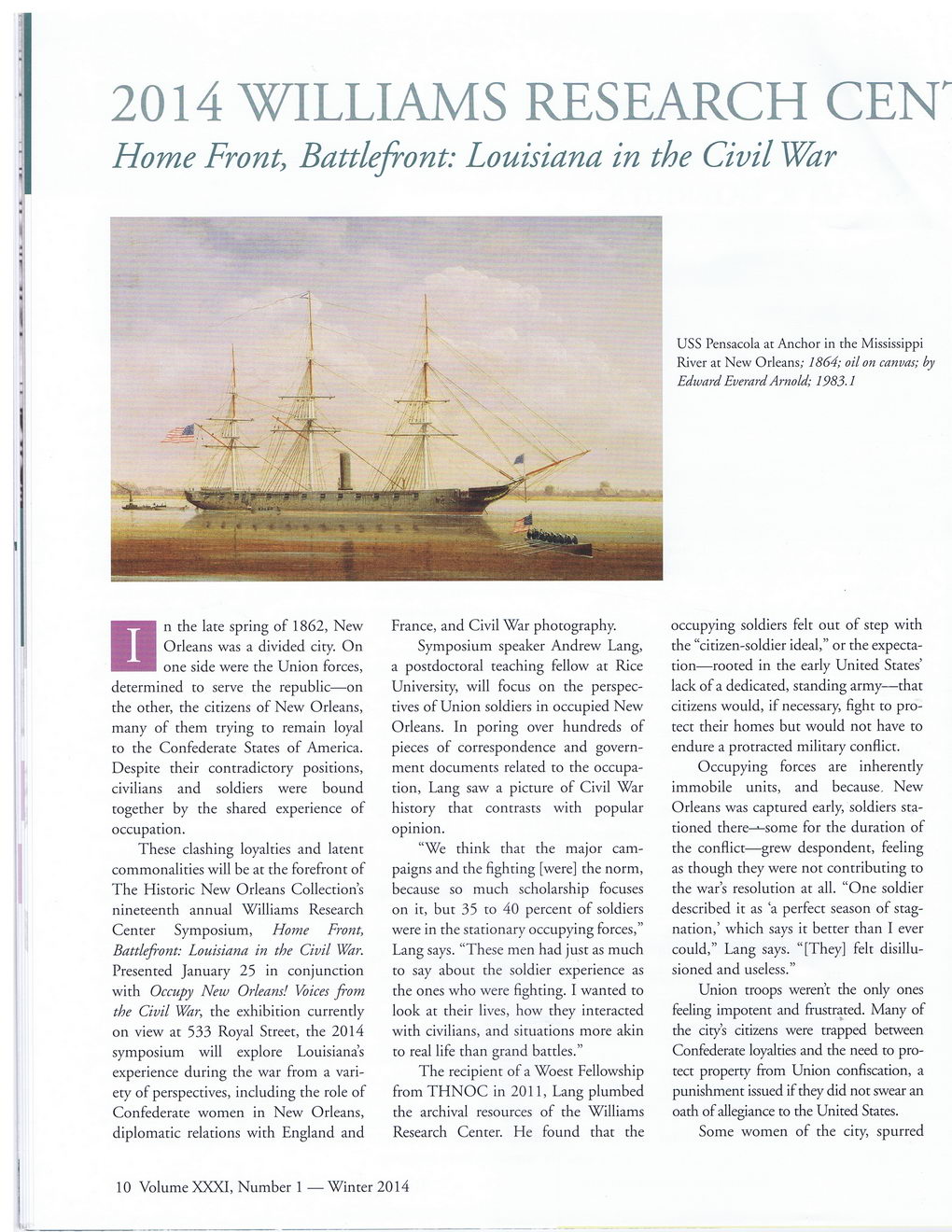This text was obtained via automated optical character recognition.
It has not been edited and may therefore contain several errors.
2014 WILLIAMS RESEARCH CEN Home Front, Battlefront: Louisiana in the Civil War n the late spring of 1862, New Orleans was a divided city. On one side were the Union forces, determined to serve the republic—on the other, the citizens of New Orleans, many of them trying to remain loyal to the Confederate States of America. Despite their contradictory positions, civilians and soldiers were bound together by the shared experience of occupation. These clashing loyalties and latent commonalities will be at the forefront of The Historic New Orleans Collection’s nineteenth annual Williams Research Center Symposium, Home Front, Battlefront: Louisiana in the Civil War. Presented January 25 in conjunction with Occupy New Orleans! Voices from the Civil War, the exhibition currently on view at 533 Royal Street, the 2014 symposium will explore Louisiana’s experience during the war from a variety of perspectives, including the role of Confederate women in New Orleans, diplomatic relations with England and France, and Civil War photography. Symposium speaker Andrew Lang, a postdoctoral teaching fellow at Rice University, will focus on the perspectives of Union soldiers in occupied New Orleans. In poring over hundreds of pieces of correspondence and government documents related to the occupation, Lang saw a picture of Civil War history that contrasts with popular opinion. “We think that the major campaigns and the fighting [were] the norm, because so much scholarship focuses on it, but 35 to 40 percent of soldiers were in the stationary occupying forces,” Lang says. “These men had just as much to say about the soldier experience as the ones who were fighting. I wanted to look at their lives, how they interacted with civilians, and situations more akin to real life than grand battles.” The recipient of a Woest Fellowship from THNOC in 2011, Lang plumbed the archival resources of the Williams Research Center. He found that the USS Pensacola at Anchor in the Mississippi River at New Orleans; 1864; oil on canvas; by Edward Everard Arnold; 1983.1 occupying soldiers felt out of step with the “citizen-soldier ideal,” or the expectation—rooted in the early United States’ lack of a dedicated, standing army—that citizens would, if necessary, fight to protect their homes but would not have to endure a protracted military conflict. Occupying forces are inherently immobile units, and because. New Orleans was captured early, soldiers stationed there—--some for the duration of the conflict—grew despondent, feeling as though they were not contributing to the war’s resolution at all. “One soldier described it as ‘a perfect season of stagnation,’ which says it better than I ever could,” Lang says. “[They] felt disillusioned and useless.” Union troops weren’t the only ones feeling impotent and frustrated. Many of the city’s citizens were trapped between Confederate loyalties and the need to protect property from Union confiscation, a punishment issued if they did not swear an oath of allegiance to the United States. Some women of the city, spurred I 10 Volume XXXI, Number 1 —Winter 2014

New Orleans Quarterly 2014 Winter (10)